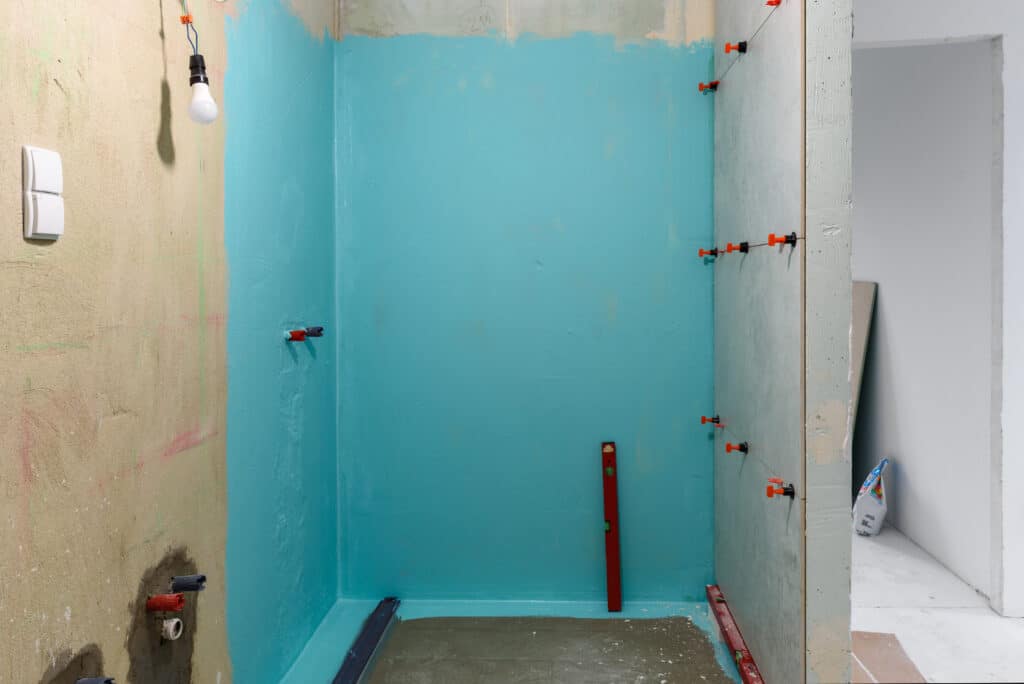Taking a relaxing shower or a bath after a long day is one of the simplest pleasures in life. However, having water damage and leaks in your bathroom can cause quite a headache. It’s important to consider waterproofing your shower or tub properly to avoid any potential damage, mold growth, and costly repairs.
Waterproofing your shower or tub can be done in several ways, but two popular methods are hot mop and schluter. In this blog post, we’ll discuss these two options, as well as other alternatives to waterproof your bathroom.
Hot Mop Waterproofing
Hot mop waterproofing, also known as hot tar, is a traditional and effective method used for decades. This process involves applying multiple layers of hot tar to the shower floor and walls, creating a barrier to prevent water from seeping through.
To start the process, the shower area is prepped by cleaning and leveling the surface. Then, a layer of roofing felt is applied to the surface and nailed down. The hot tar is heated in a kettle until it melts, and then it is poured over the roofing felt. The tar is spread evenly using a broom or a squeegee. This process is repeated multiple times, creating a thick and durable waterproof barrier.
Although hot mop waterproofing is effective, it has its downsides. The process can be messy, smelly, and time-consuming. Additionally, it can be challenging to remove the hot mop if you need to do any repairs or renovations in the future.

Schluter Waterproofing
Schluter waterproofing is a modern and innovative way of waterproofing your bathroom. This method uses a waterproof membrane that is installed on top of the shower substrate, creating a barrier that prevents water from penetrating.
The Schluter waterproofing membrane is made of a durable and flexible material that can withstand the movement and flexing of the shower substrate. The membrane is cut to size and installed using specialized adhesives and fasteners.
One of the significant advantages of Schluter waterproofing is that it’s quick and easy to install. Unlike hot mop, the process is clean and odorless. Additionally, if you need to do any repairs or renovations in the future, the membrane can be easily removed and replaced.
Other Waterproofing Options
Aside from hot mop and schluter waterproofing, there are other options you can consider to waterproof your shower or tub.
- Cement Board
Cement board is a popular substrate used in bathroom remodeling projects. It is a durable and waterproof material that is easy to install. To waterproof your shower or tub with cement board, simply install it on the shower substrate and seal the seams with waterproof tape or caulk.
- Liquid Waterproofing
Liquid waterproofing is another popular option for showers and tubs. This method involves applying a liquid membrane to the shower substrate, creating a waterproof barrier. Liquid waterproofing is easy to install, and it can be used on a variety of surfaces, including concrete, wood, and cement board.
- Sheet Membrane
Sheet membrane is a waterproofing material that is similar to Schluter. It is made of a flexible material that is installed on top of the shower substrate, creating a barrier to prevent water from seeping through. Sheet membrane is easy to install and can be used on a variety of surfaces.
Conclusion
Waterproofing your shower or tub is an essential step in preventing water damage and costly repairs. Whether you choose hot mop, schluter, or other options, make sure to choose a method that is appropriate for your bathroom and budget. Remember to follow the manufacturer’s instructions carefully and consult with a professional if you’re unsure about the process. A properly waterproofed shower or tub will provide you with years of relaxation and peace of mind.
HELPING TO IMPROVE SPACES
Affordable Frameless Shower Doors team of professionals brings decades of construction and home remodel experience to you living spaces. Attention to detail is vital for shower glass and we pride our selves on consistent and professional fabrication and install every time.


